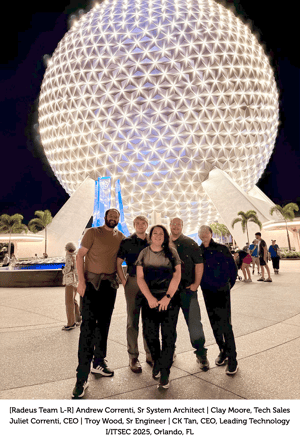“Maintenance friendly” Antenna Drive Unit offers daylight readable angle and signal display.
POWAY, CA – March 27, 2018 — Radeus Labs Inc., a market leader in the design and manufacture of high-performance antenna control systems, released a new version of the 8250 Antenna Drive Unit (ADU). The 8250D builds on the quality and robust operation of the 8250 ADU with the addition of a daylight readable display that shows the antenna look angles (AZ, EL, and Pol), beacon frequency, and relative signal strength in decibels.
Andrew Correnti, Engineering Manager at Radeus Labs notes that, “Many of our customers need the look angles and signal information while they are performing maintenance on their antenna systems. Incorporating this option into our 8250D ADU just makes sense for many of our customers.”
The 8250D ADU jog panel display offers a crisp and readily visible readout of antenna look angles and signal information incorporated into the ADU jog panel. The readout is designed to be visible even in direct sunlight when most displays become unreadable. The 8250D retains the high-quality components from respected companies such as Allen Bradley® and Yaskawa® which increase the performance and reliability of the unit. The 8250D is now available, for more information or to place an order contact us at sales@radeuslabs.comtoday!
Radeus Labs, Inc.
Radeus Labs, Inc., with headquarters and manufacturing facilities in Poway, CA, is a leader in the design, manufacture, and marketing of leading-edge hardware and software systems for the defense and SATCOM markets. Radeus Labs products are thoughtfully designed with a focus on ease of use, high-performance, and sustainability. They are engineered to give exceptional product life spans and deliver added value to our customers. Radeus Labs after sales support are unrivaled in the commercial SatCom market. For more information about Radeus Labs and our high-performance products, visit us at www.radeuslabs.com.
For information about this release, please contact:
Chris Steph
Director of Sales and Marketing
Radeus Labs Inc.
(858) 602-1252
Chris.Steph@radeuslabs.com




